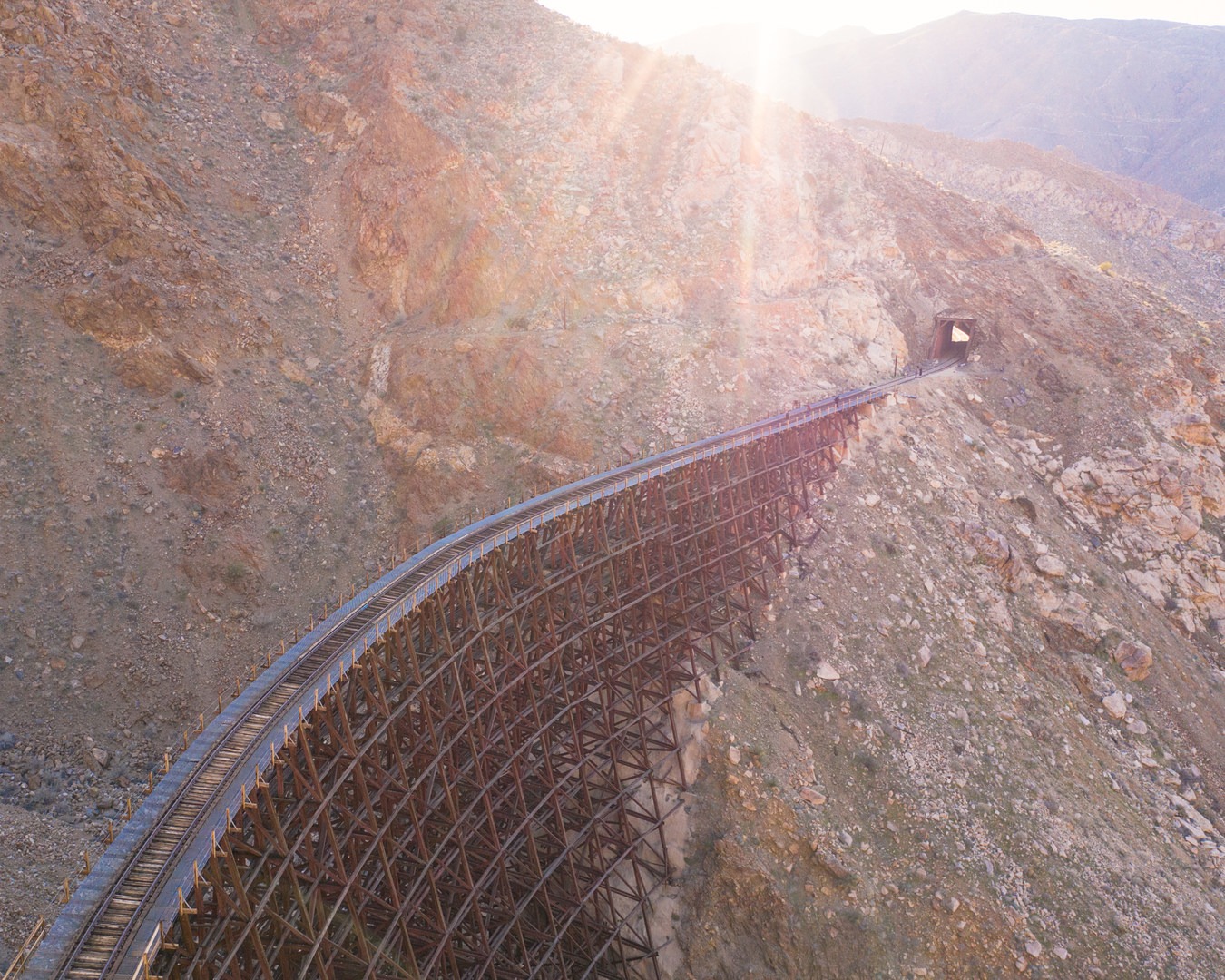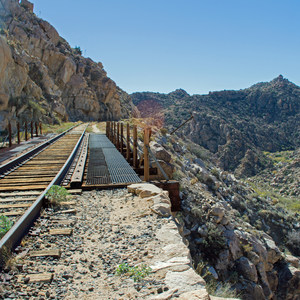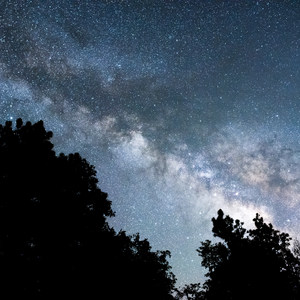You are here
In the southern section of Anza-Borrego Desert State Park, only 15 miles from the border of Mexico lies one of the largest wooden trestle bridges in the world. The Goat Canyon Trestle, 600 feet long and 200 feet high, was built in 1932 in an effort to connect San Diego to Yuma via railroad running through a very harsh desert environment.
The bridge and the tunnels that traverse the Carrizo Gorge Railroad are considered private property and hikers have reported being ticketed for trespassing along the railroad easement. Proceed at your own risk. In 2016, the operation of the Desert Line Railroad, which includes the Goat Canyon Trestle and spans several hundred miles into Mexico, was subleased to Baja California Railroad. According to company representatives, the railroad is closed to recreational use, and trespassers risk a fine from the Pine Valley district of San Diego County Sheriff. Patrols are conducted randomly. This route to the bridge from Mortero Palms is legal, but stepping onto the bridge is trespassing, as is hiking the more popular route via Carrizo Gorge Road.
For very experienced hikers only: This is a strenuous 6-mile out-and-back hike that should only be attempted in cooler conditions. It includes over 2,000 feet of elevation gain and scrambling down a dangerous rocky ravine to access the bridge. There is no shade along the route, nor is there water. (Plan to carry 3 liters.) This trail is not appropriate for kids or dogs. Temperatures in this desert can reach dangerous levels and cell service is unavailable as soon as the trail begins, if not earlier. Be smart, do your research, and come prepared.
The drive to Mortero Palms follows a dirt road, likely requiring a four-wheel drive vehicle. Small sedans may be able to navigate the road, but may also require a few turnarounds and rerouting to the trailhead! GPS will be necessary as well for trail finding, so make sure you have an offline GPS track saved to your phone before cell service shuts off upon entering the park.
From the Mortero Palms parking area, your steep ascent begins up the eastern side of the mountain, through rocky sections with lots of cacti. The trail flattens out for a bit, allowing you a beautiful view over Ocotillo to the east and toward the west up the saddle you will climb. It is very important to follow GPS tracks at this point, because the topography can be disorienting, and you can easily get turned around.
After traversing the saddle, you will come to a mesa that will hopefully have a breeze and offer sweet relief from the climb you just endured! From here, follow your GPS to find your way to the ravine, the start of the descent. This section is difficult with scrambling required down huge boulders and on slippery terrain. There is one especially steep section that is aided with a rope, but as always, don’t depend on any ropes you haven’t set yourself. As of January 2019, there is a large rock avalanche evident on the way down the ravine that you will cross, so be extra careful in your footing and also to make sure that you don’t knock any rocks onto hikers below. At last, when it feels like your body can take no more, you spot the bridge, and it is grand!
The trestle bridge is maintained and has steel grates that traverse the wooden planks that create the railway. There is an old railroad car perched on the northern side of the bridge. There are old mines and tunnels on either side of the bridge.
Leave plenty of time to return to the trailhead, and keep in mind that you are now only halfway done with the hike! The trail will be hiked in reverse, retracing your steps up the ravine, over the mesa, and down the mountains that you traversed on your way up. Carry a headlamp, emergency blanket, first-aid kit, and an extra liter of water in the case of emergency.









Comments
Sign In and share them.